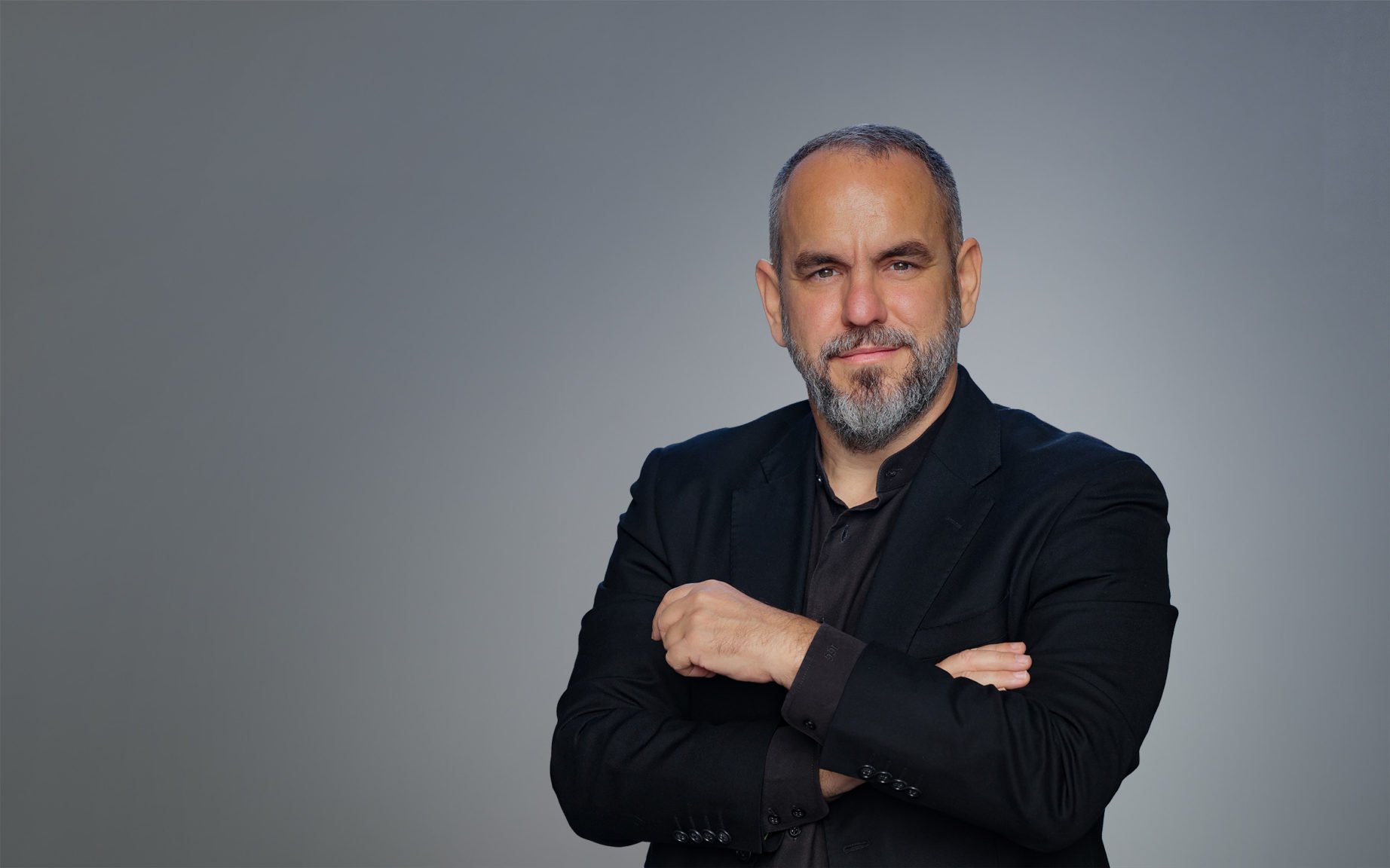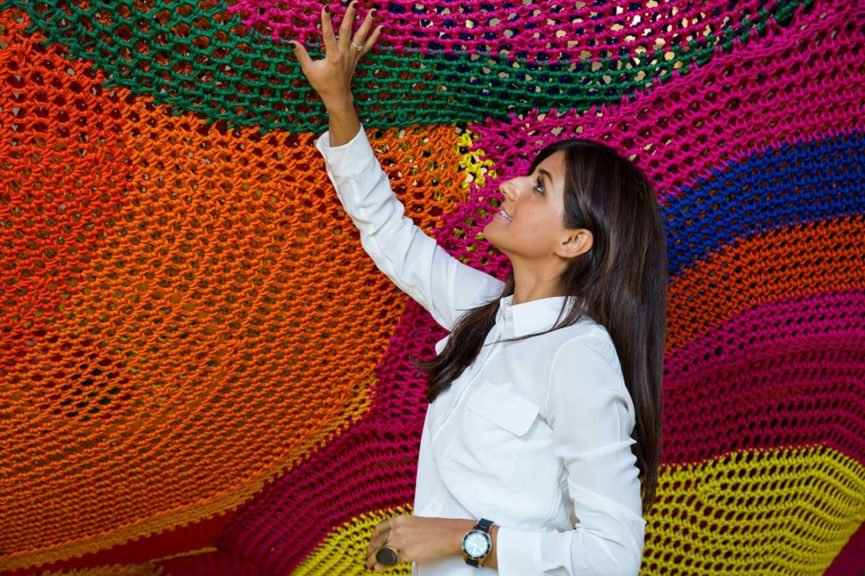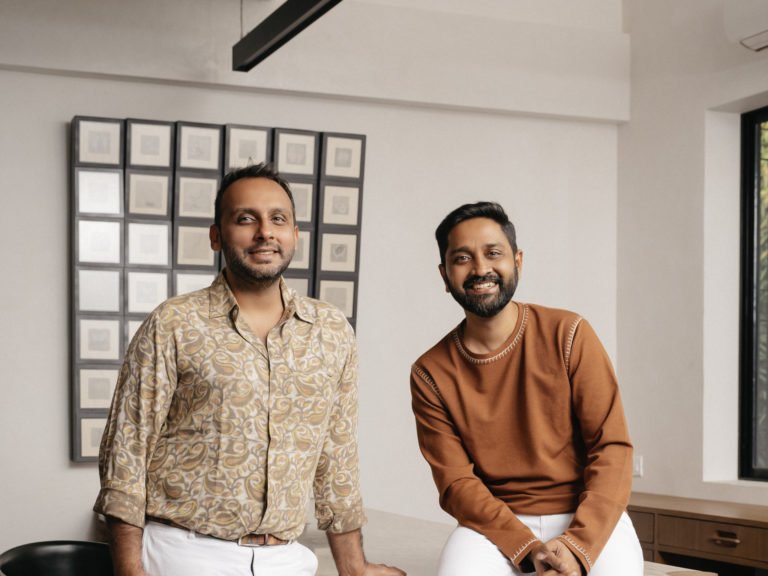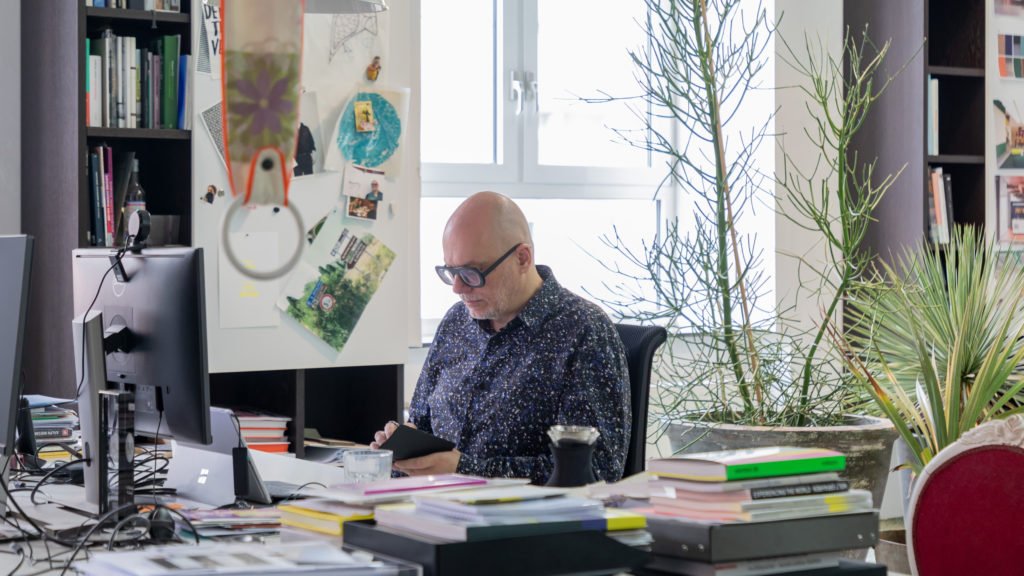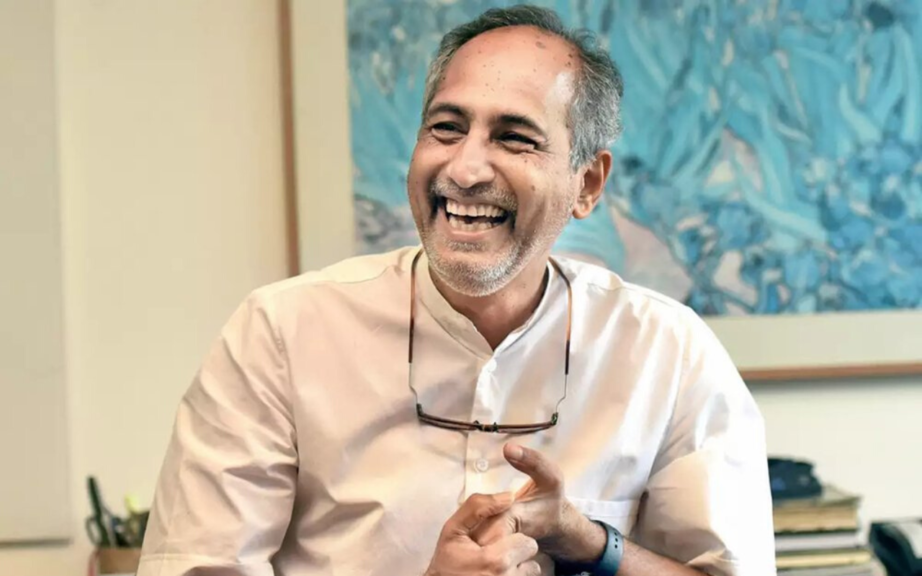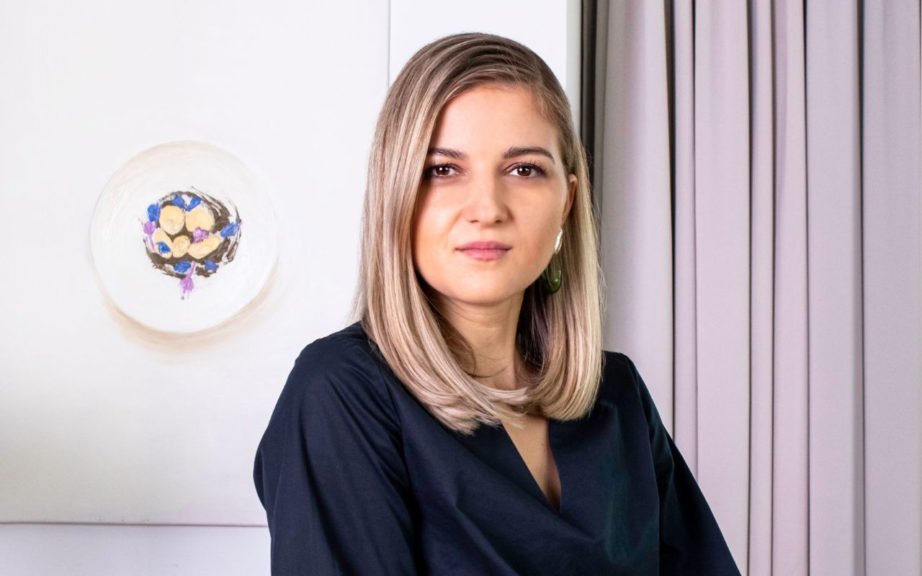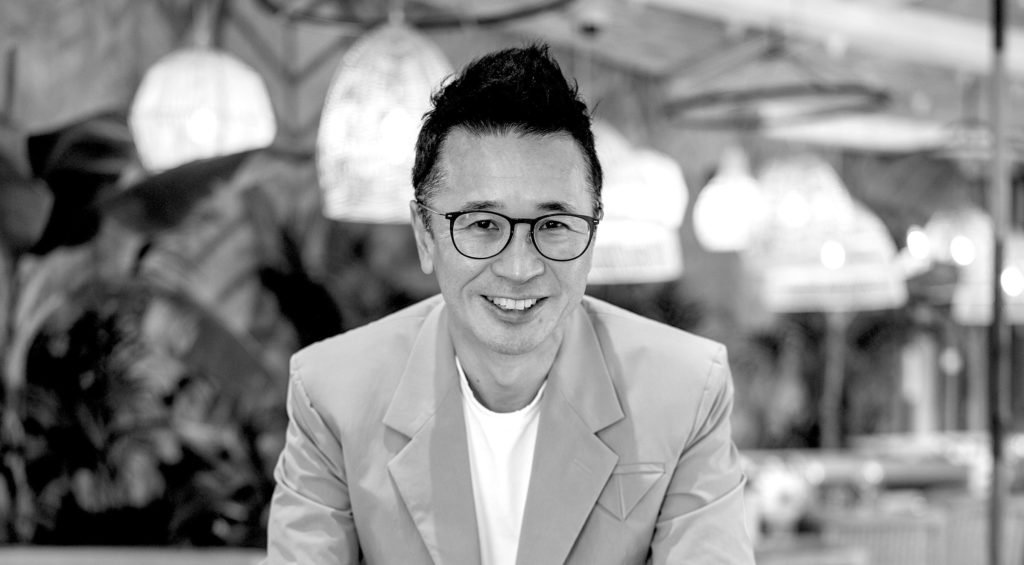For Ignacio Gomez, architecture wasn’t merely a career choice—it was destiny knocking early. His journey spans from Madrid to Dubai, with notable stops in Barcelona and Sweden. Today, Ignacio is on the brink of realising his dream project, NEOM’s Gidori. In a candid interview with Love That Design, he shares insights into his nearly two-decade-long love affair with architecture—from reimagining the future to battling the creeping commoditization of his craft…
For most, architecture is a love at first sight—a passionate affair ignited by the scale or grandeur of magnificent monuments, compelling tales of ancient ruins, or the charming alleys of a foreign city. But for Ignacio Gomez, Global Principal Designer at Aedas, this love began in an unexpected place—a small, unassuming room that changed his life forever.
All It Takes is A Peep into A Design Studio
Imagine a six-year-old boy dragged along to his father’s (mundane) meetings. “My father was involved in small real estate developments in our hometown. I often found myself sitting in municipality permitting offices, lawyer’s offices, or notary’s offices,” Ignacio recalls, his eyes twinkling with amusement. Then one day, everything changed: he stepped into an architect’s studio.
His face lights up as he recounts that fateful moment. “They had these enormous drawing boards, markers, endless pencils and rulers, and gadgets that looked insanely cool to a kid. They even had a special brush to clean the eraser shavings! It was like a shock to my system. I thought, these people have the coolest job in the world; they get paid to sketch and draw all day! From that day on, I was determined to be an architect.”
Looking back, Ignacio admits he didn’t fully grasp the architect’s role at first, but his determination to pursue the profession never wavered.
“They had these enormous drawing boards, markers, endless pencils and rulers, and gadgets that looked insanely cool to a kid. They even had a special brush to clean the eraser shavings! It was like a shock to my system. I thought, these people have the coolest job in the world; they get paid to sketch and draw all day! From that day on, I was determined to be an architect.”
– Ignacio Gomez
The Wanderer’s Path
Ignacio’s journey was far from straightforward. At just 16, he left his small hometown in southern Spain for Madrid, and later ventured to Sweden—an experience that proved transformative. “Studying for a year in Sweden, made me rethink many ideas and led to a hiatus where I started working in construction e-commerce companies—the Amazons of construction materials at the time”. This detour empowered him to return and complete his master’s degree.
Before anchoring his career at Aedas in Dubai, Ignacio worked in Barcelona with firms like B720 and L35, and later with Godwin Austen Johnson in Dubai. “I’ve been lucky to meet great mentors like Antonio Miranda and Andres Canovas during my university years, and in Dubai, Brian Johnson, the late Ricus Van Zyl, John Gillen, and Keith Griffiths. Architecture is a practice where you need great mentors to learn from,” he muses thoughtfully.
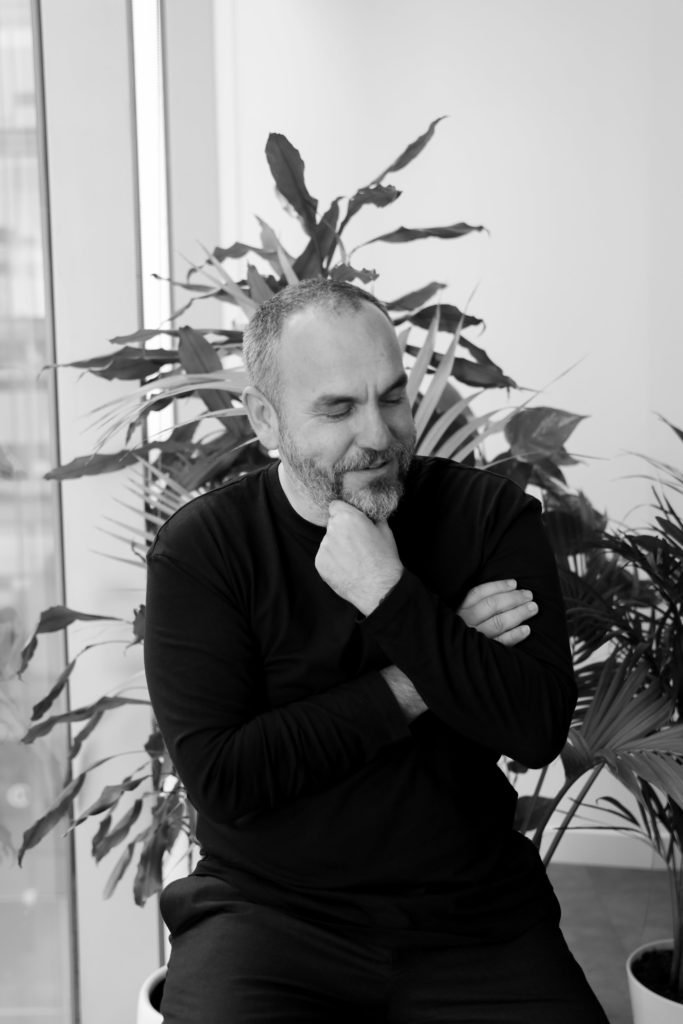
Gidori, The Dream Project: A Time Traveler’s Fantasy
A glance at NEOM’s ambitious and futuristic project Gidori, and it’s clear Ignacio harbours a secret wish to time travel. Surprisingly, though, he would likely journey to the past. Driven by an obsession with ancient civilizations (read Mesa Verde) that built their homes under large rocks and in big caves, Ignacio reveals, “Gidori is a treasure of tomorrow, steeped in natural beauty and advanced technology. We wanted to create exactly that—an architectural monument of the future.”
He continues, “Our big monolithic piece is designed to provide protection and shelter, a place for the community to gather under a structure that almost defies gravity. This big triangular structure not only creates a communal space but also offers climate protection, echoing nature’s simplicity and strength. I think this is what sets us apart from the rest of the competition—our attempt to imitate nature with a simple yet strong design gesture.”
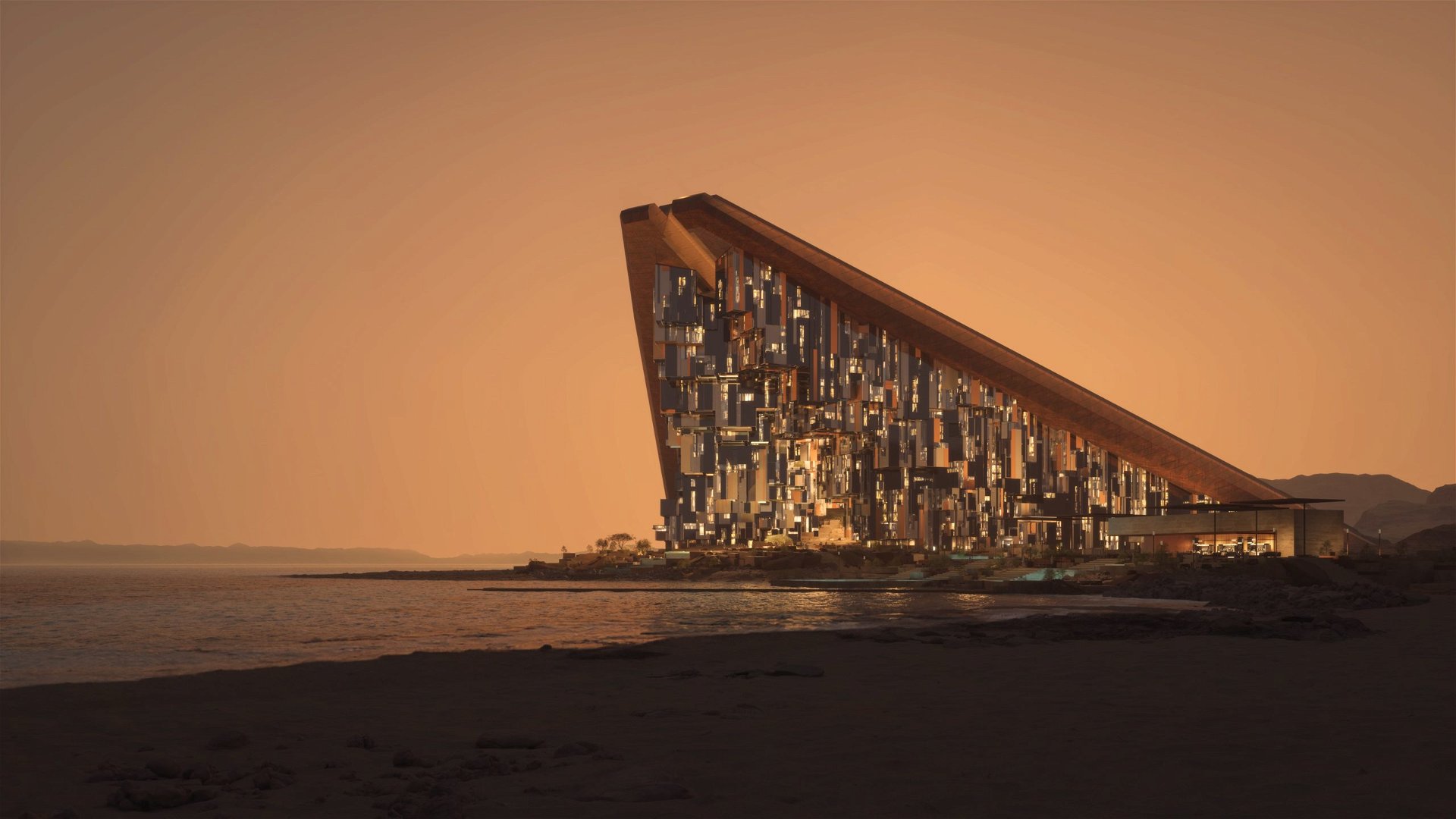
“Our big monolithic piece is designed to provide protection and shelter, a place for the community to gather under a structure that almost defies gravity. This big triangular structure not only creates a communal space but also offers climate protection, echoing nature’s simplicity and strength. I think this is what sets us apart from the rest of the competition—our attempt to imitate nature with a simple yet strong design gesture.”
– Ignacio Gomez
Symbiotic Architecture and Sustainability
Building on his love for contextual and symbiotic architecture, Ignacio ponders the elusive nature of context. “What is the real context of Manhattan—is it the incredible man-made nature of Central Park or the hustle and bustle of Times Square?” he muses.
However, Ignacio has found a hint in history. “From Al-Turaif in Riyadh to Albaicin in Granada, traditional towns and architecture from the past are incredibly complex and serve as sources where we can learn more about sustainability, minimisation of resource use, and energy efficiency,” he explains.
He is optimistic that the future will bring a new approach to sustainability, one that emphasises a shift in mindsets and behaviours. “For instance, it’s quite unbelievable that we no longer repair anything—TVs, phones, and a lot of technology is literally replaced because it’s cheaper to buy a new one than to repair and fix the existing one. This disposable culture is unsustainable, and addressing it should be part of our sustainability efforts,” he asserts.
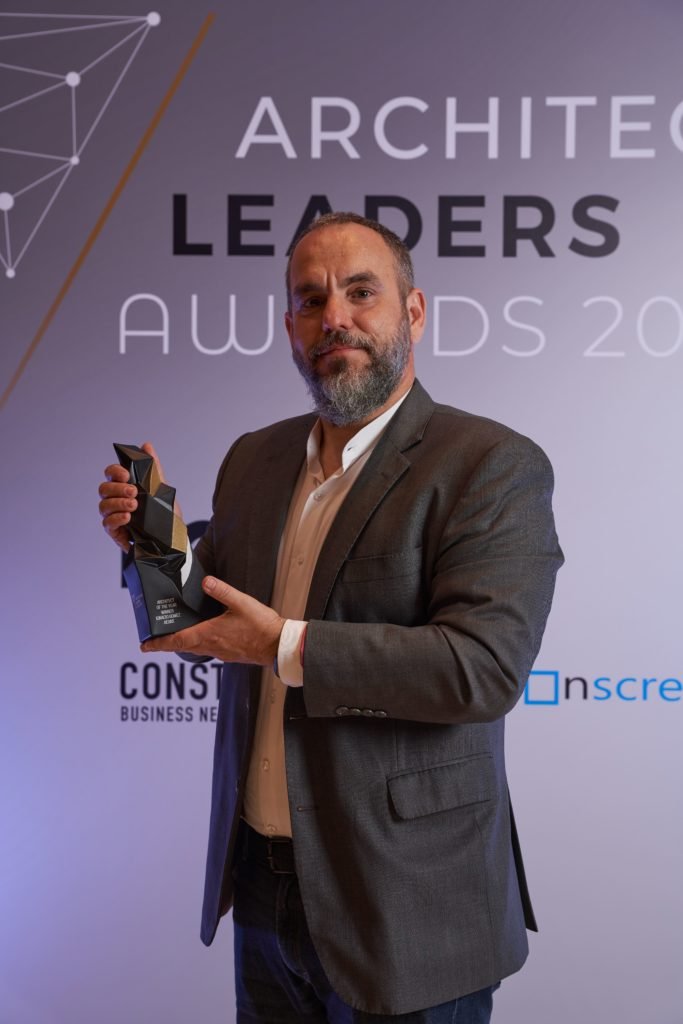
Inside Ignacio’s Living Room Office
For most people, their office is their second home, but for Ignacio, it is his home—literally. Nestled right in the middle of his living room, Ignacio’s workspace is a large central table with four workstations designed for him, his wife Blanca, and their two sons, Pablo and Ignacio.
“Our work is a reflection of who we are; it defines us. So, as a family, we have always worked together in the same space. It brings me immense joy to see what they are learning and working on,” Ignacio says with a smile. The workspace is bathed in natural light, with views of lush greenery and a small garden where he grows winter tomatoes—a space filled with warmth, creativity, and inspiration.
“We’ve modeled our home workspace after an open-plan office, adapting it to fit our home life. I think homes should feel more productive, and offices should feel more like home. We also have large windows that let in plenty of natural light and offer a beautiful view of the lush greenery outside, with palm trees and my small garden where I grow tomatoes in the winter.”
– Ignacio Gomez
Teamwork Makes the Dream Work
When asked about the most enjoyable part of his job, Ignacio is quick to point out, ‘teamwork.’ “A common misconception is that architecture is a one-man show when it’s all about teamwork. Some of the projects we do at Aedas require assembling large teams of architects. Some teams are 10 people, others 30, and some of the big projects even require 90 architects working together. I really enjoy seeing teams working collectively towards the same goal, everyone working hard to achieve something great,” he explains.
Conversely, what dreads him are egos and poor communication. “Architecture is easy; dealing with architects, not so much!” he laughs.
When not immersed in projects, Ignacio mentors interns, taking pride in their growth. “It’s extraordinary to see how far they’ve come, now leading big, complex projects within our organisation,” he says, beaming with pride.
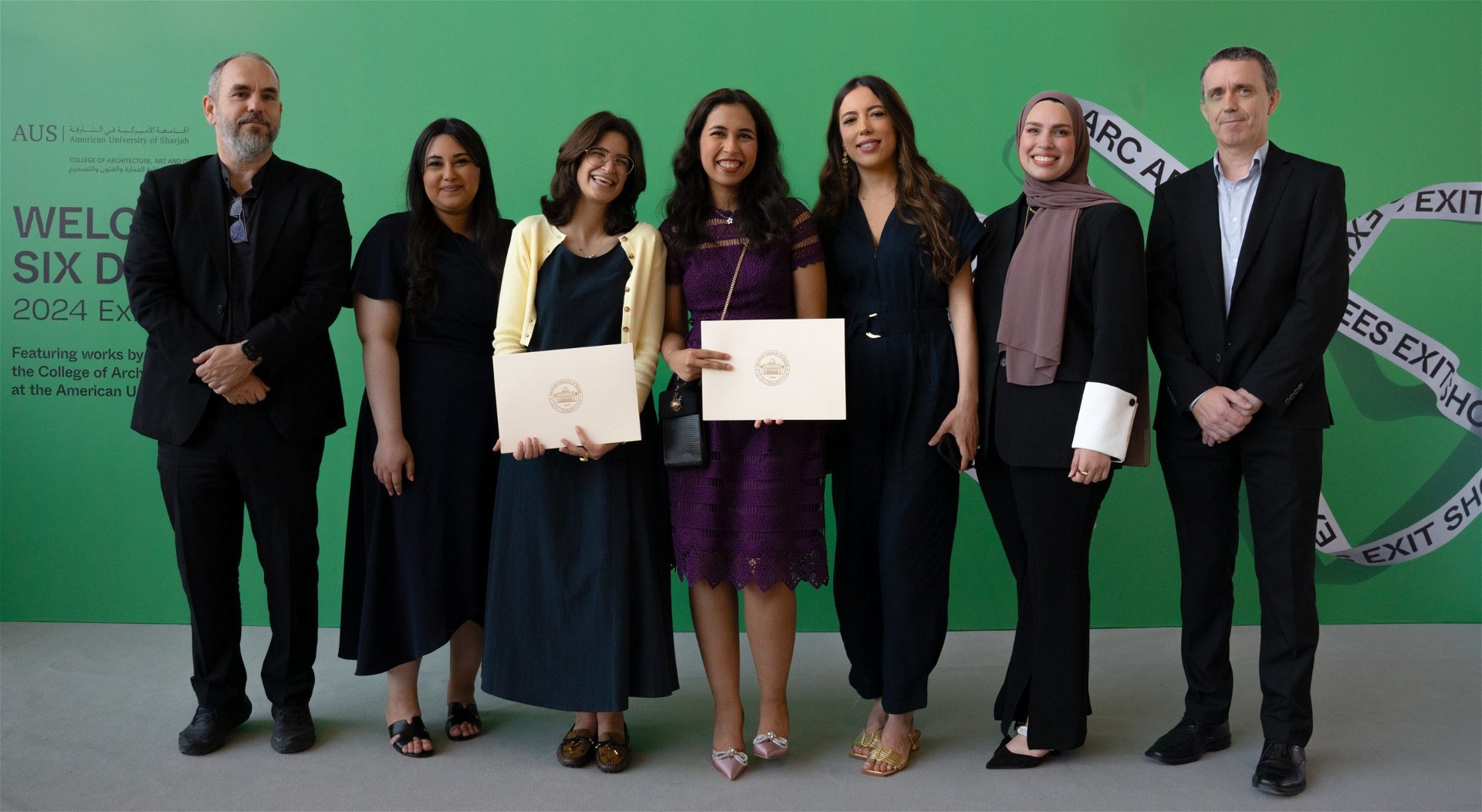
A Looming Threat: The Commoditization of Architecture
The conversation turns serious as Ignacio expresses his concerns about the profession’s slow adaptation to rapid changes in the construction industry. “It feels as if architecture is being absorbed by these multidisciplinary engineering companies that have incorporated architectural services as just another side service within a mix of other disciplines. Within these large organisations, architecture is losing its voice, its independence, and its ability to disagree when necessary,” he observes.
He warns that architects are disconnecting from their audiences and clients, with their discussions and ideas resonating only within their own circles.
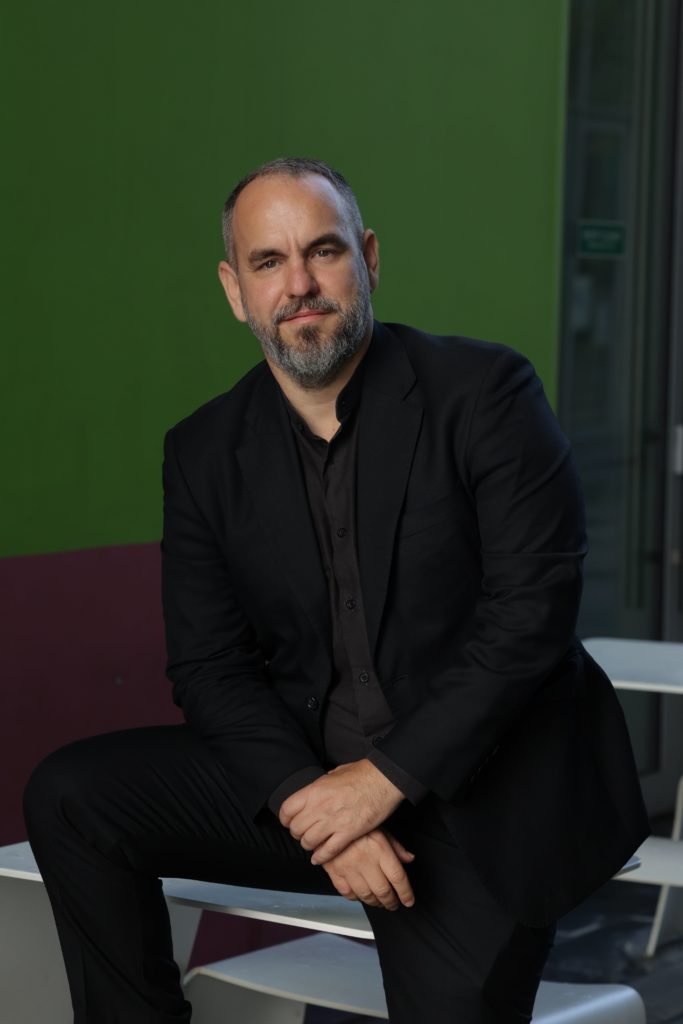
Embracing the Future with AI
Weighing in on AI, Ignacio acknowledges the inevitable changes it will bring. “Intelligence was a skill once assumed to be exclusive to humans, but we are approaching the moment of singularity, where creativity might not remain solely within the human domain; it’s just a question of time and deployment,” he reasons. He notes that while humans are bound by time, taking up to nine months to design a project, AI architectural services can prompt a solution in nine minutes, potentially making creativity a luxury rather than a necessity.
“Intelligence was a skill once assumed to be exclusive to humans, but we are approaching the moment of singularity, where creativity might not remain solely within the human domain; it’s just a question of time and deployment.”
– Ignacio Gomez
Recommendations for Young Architects
Ignacio’s advice to young architects is rooted in his own experiences: “When you’re young, it’s easy to feel invincible, but remember, you have only one body, and it needs to be nurtured and maintained. Manage your time effectively to ensure you get enough rest. A healthy body supports a creative and sharp mind, essential for an architect.”
He emphasises the significance of learning from influential works, recommending, “From the outset, I’ve been deeply influenced by figures like Rem Koolhaas and OMA—exploring their architecture, publications, and insights. ‘Delirious New York’ and ‘S, M, L, XL’ are foundational for understanding the evolution of architecture. Additionally, ‘Al Manakh Volume 1 and 2’ offer crucial insights into architecture in the Middle East region.”
Article info
Article:
Date added:
25 June, 2024

